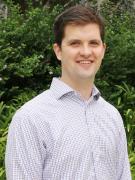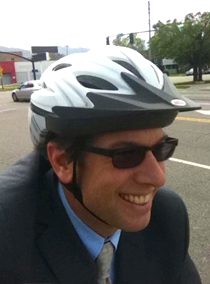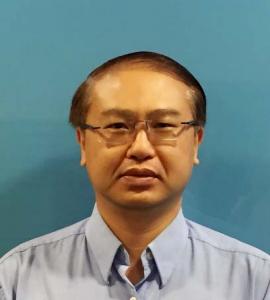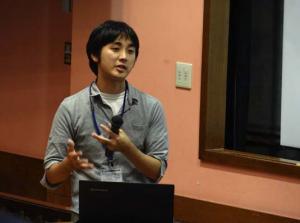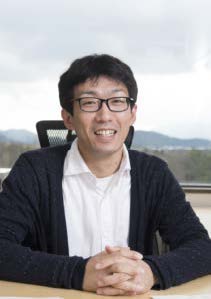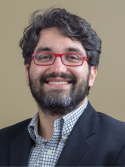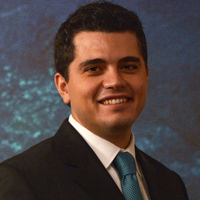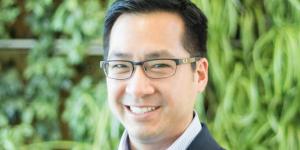Event Type: Seminar
Measuring & Doing The Right Things In The Era Of Driverless Cars: Creating Smart, Livable, & Equitable Streets And Cities With Autonomous Vehicles
Since the beginning of modern planning, images, illustrations, and diagrams have been used to conceptualize ideas, evaluate performance, and guide approaches. In the 1970s and ‘80s, a seminal transit performance evaluation framework was developed at UCI by Professor Emeritus Gordon “Pete” Fielding that is still used to this day.
Dr. Appleyard builds on this work, and will present a performance evaluation framework to guide the future of autonomous vehicles toward sustainability, livability, and equity. It does this by prioritizing the measurement of the movement of people above the movement of vehicles, and by integrating land use with transportation policies. The goal is to realize two overarching objectives:
More vehicle sharing (lowering vehicle trips)
Less sprawl (shortening trip distances)
Dr. Appleyard will also outline key principles and steps toward more sustainable, livable, & equitable autonomous vehicle futures for our streets and communities.
Dr. Appleyard is an Associate Professor of City Planning/Urban Design at San Diego State University (SDSU) where he helps people and agencies to make more informed decisions about how we live, work and thrive. He is a renowned expert on street design, the future of transport, as well as how to integrate transportation, land use, and urban design to help places become more sustainable, livable and equitable. He is an author of numerous articles, reports, and books.
He has also recently developed an online Smart Growth/Livability Calculator to help the people of California with development challenges, from Climate Action Planning to Housing. The Robert Wood Johnson Foundation named Dr. Appleyard as one of their Top Ten Active Living Heroes for his work with communities. Dr. Appleyard holds a Doctorate (as well as a Masters and Bachelors) from the University of California, in the town of Berkeley where he grew up.
Adaptive Coordinated Traffic Control For Stochastic Demand
Traffic arrivals at intersections are inherently uncertain due to variable traffic conditions. This paper develops an adaptive coordinated traffic control approach via the notion of Phase Clearance Reliability (PCR) (Lo, 2006). In contrast with a conventional green extension scheme, the proposed approach adjusts signal offsets adaptively to explicitly address the presence of stochastic demands. Based on the cumulative queuing regime, we first extend the delay models, which are usually formulated for isolated intersections, to coordinated intersections by incorporating the effects of residual queue and signal offset. We then formulate a two-stage stochastic program to minimize the expected total delay for the coordinated corridor. The base timing plan is derived at Stage 1, while recourse decisions of adaptive signal offsets are made at Stage 2 to compensate for the overflow effects. Furthermore, a PCR-based gradient solution algorithm is developed to solve this two-stage stochastic program. The case study on a 3-intersection network under different levels of demand variability confirms the effectiveness of the proposed PCR-based control method, which can reduce the expected total delay by as much as 50-60% compared with the traditional optimization approach, as confirmed by simulation with the Cell Transmission Model. Its remarkable performance stems in a large part from the resultant much shorter cycles, as the random arrivals are addressed by adjusting the signal offsets adaptively. This effective use of signal offset provides a new perspective for designing coordinated signal control plans.
Professor Hong K. LO is Department Head and Chair Professor of Civil and Environmental Engineering and Director of GREAT Smart Cities Center of the Hong Kong University of Science and Technology. His expertise includes dynamic transportation system modeling, traffic control, network reliability, and public transportation analysis. Professor Lo is very active in the transportation community, for instance, elected as Convener of the International Scientific Committee of the conference series Advanced Systems for Public Transportation (CASPT), serves as Founding Editor-in-Chief of Transportmetrica B: Transport Dynamics, Managing Editor of Journal of Intelligent Transportation Systems, and on the editorial boards of many international journals, including Transportation Research Part B, International Journal of Sustainable Transportation, ASCE Journal of Urban Planning and Development, among others. Professor Lo was awarded the prestigious triennial World Conference on Transportation Research (WCTR) Prize in 2001, Eastern Asia Society for Transportation Studies (EASTS) Outstanding Paper Award in 2003, and Hong Kong Institution of Engineers (HKIE) Transactions Prize in 2000, more recently, HKUST School of Engineering Research Excellence Award in 2014. Prof Lo is a Fellow of The Hong Kong Institution of Engineers (HKIE), Fellow of the Chartered Institute of Logistics and Transport (CILT), Fellow of the Hong Kong Institute of Highway and Transportation (IHT), and Fellow of the Hong Kong Society for Transportation Studies.
A THIRD ROUTE CHOICE ALTERNATIVE FOR THE STOCHASTIC USER EQUILIBRIUM MODEL
The stochastic user equilibrium (SUE) principle was suggested by Daganzo and Sheffi (1977) more than forty years ago to relax the perfect knowledge assumption of network travel times of the deterministic user equilibrium (DUE) model. It is defined as follows: “At SUE, no motorists can improve his or her perceived travel time by unilaterally changing routes”. Specifically, a random error term is incorporated in the route choice decision process to simulate travelers’ imperfect perceptions of network travel times, such that they do not always end up picking the minimum travel time route. In the SUE research, two models dominate the literature. The logit SUE model, based on the Gumbel random error term, has a closed-form solution, but it suffers two major drawbacks (i.e., inability to account for overlapping (or correlation) among routes and inability to account for perception variance with respect to trips of different lengths). On the other hand, the probit SUE model, based on the normal random error term, does not have the two drawbacks, but it lacks a closed-form solution. In this seminar, I will present: (1) a third alternative using the Weibull distribution as the random error term to obtain a closed-form probabilistic route choice model, (2) a weibit-based SUE model that can account for both route overlapping and route-specific perception variance problems, (3) several extensions including the weibit-based model with elastic demand, the weibit-based model with combined mode and route choices, the hybrid logit-weibit SUE model, and the stochastic assignment paradox analysis between the logit and weibit models, and (4) some recent developments on the SUE models.
Dr. Anthony Chen is a Professor in the Department of Civil and Environmental Engineering at the Hong Kong Polytechnic University (PolyU) in Hong Kong. Prior to joining PolyU, Dr. Chen was a Professor in the Department of Civil and Environmental Engineering and Head of the Transportation Division at Utah State University in the United States for seventeen years. Dr. Chen was a recipient of the prestigious Faculty Early Career Development (CAREER) Award from the National Science Foundation (NSF) in 2002 and the Chang Jiang Chair Professor from China in 2015. Dr. Chen is currently serving as an associate editor for Transportmetrica A: Transport Science, Networks and Spatial Economics, and Journal of Advanced Transportation, and an editorial board member of Transportation Research Part B: Methodological.
LINK AS AN AGGREGATE ALTERNATIVE: A CONTINUOUS RECURSIVE LOGIT REPRESENTATION OF PEDESTRIAN BEHAVIOR
This study focuses on origin-destination (OD) demand estimation with limited datasets, using sampling to obtain a distribution of the OD demand pattern that includes spatial variation. Traditional methods, which obtain one most likely OD demand pattern, cannot include variations. Our proposed algorithm extracts generated trips and calculates destination choice probability and link travel time. A discrete destination choice model utilizes a stochastic utility from unobserved spatial correlations as a means of obtaining a distribution of OD demand patterns. The algorithm generates a set of sampled OD demand pattern using a Monte Carlo approach; this spatial correlation produces a variety of OD demand patterns, which cannot be obtained by a traditional entropy model. The algorithm’s performance is verified by numerical examples in the Philadelphia network. The results show that our proposed algorithm is highly reproducible and computationally efficient.
Junji Urata is an assistant professor of Kobe University, Japan. He received Dr. Eng. (city planning) from the University of Tokyo in 2015. He moved to Kobe University as an assistant professor in 2016. He worked for a Post-K computer project “Priority Issue 3: Development of Integrated Simulation Systems for Hazard and Disaster Induced by Earthquake and Tsunami”. His research topics include behavioral modeling, travel behavior analysis under emergency situation and implementation of a traffic simulator with high-performance computing.
SAMPLING APPROACH TO SPATIAL VARIATION FOR OBTAINING A SET OF TRAVEL DEMANDS
The objective of this study is to propose a new model of mode, route, and path choice behavior of pedestrians under the recursive logit modeling framework which follows the random utility maximization theory. A main issue tackled in this study is about how to handle the fact that paths for pedestrians are essentially continuous in space and thus the path enumeration is almost impossible, making difficult to develop a consistent measure of economic welfare for both "route" behavior in a network and "path" choice behavior in a continuous space. To overcome this issue, we consider each pedestrian link as an aggregate alternative of infinite pedestrian paths, where the link utility is defined as the expected maximum utility of all possible pedestrian paths. Since the choice set generation problem in the discrete choice context becomes the problem of specifying an appropriate probability density function in the continuous choice context, we introduce the path density function which is constructed from a primitive free-flow pedestrian behavior model in a continuous space, where geometric conditions of the link are taken into account. We show an empirical strategy to estimate the parameters in the proposed model, and confirm the feasibility of the proposed model through a numerical study.
Makoto Chikaraishi is an Associate Professor at the Graduate School of International Development and Cooperation, Hiroshima University, Japan. His main research interests include understanding and modeling of activity-travel behavior, mathematical modeling of urban systems, and the relevant policy analyses with a particular focus on environmental and social risk management. He is currently working on research projects on the evaluation of the impacts of shared and/or automated vehicle on activity and travel behavior in disadvantaged areas, theoretical and empirical investigations on the value of mobility, and the application of artificial intelligence technologies for transport demand-supply management.
STATISTICAL INFERENCE OF A CLASS OF STOCHASTIC CAR-FOLLOWING MODELS
This talk presents the formulation and parameter estimation of a family of microscopic car-following models based on stochastic desired acceleration processes. This formulation generalizes previous separate efforts based on Brownian and geometric Brownian acceleration processes, each reproducing a different feature of traffic instabilities. The model parameters are estimated using maximum-likelihood estimation (MLE) on data from a series of car-following experiments. The MLE optimization problem is unique in our case because (i) error terms are regime-specific, and (ii) there is a dependency between the data and parameters that needs to be accounted for. The models are general so that a wide variety of hypotheses might be tested with statistical inference methods, such as homogeneity of driver/vehicle population, the significance of roadway geometry, or the impacts of automated vehicles.
Dr. Laval is an Associate Professor at the School of Civil and Environmental Engineering at Georgia Institute of Technology. Dr. Laval obtained his B.S. in Civil and Industrial Engineering from Uiversidad Catolica de Chile (1995), his M.S. in Civil Engineering from the University of California at Berkeley (2001), and his Ph.D. in Civil Engineering from the University of California at Berkeley (2004). Prior to joining Georgia Tech doctor Laval held two consecutive Postdoc positions at the Institute of Transportation Studies at UC Berkeley, and at the French National Institute for Safety and Transportation Research (INRETS). After obtaining his B.S. he worked as a transportation engineer for five years at the Chilean Ministry of Public Works, where he conducted numerous traffic and revenue studies for urban and inter-urban road concessions. He has made important contributions in the area of traffic flow theory, modeling and simulation, which focus in understanding freeway congestion dynamics and developing effective control strategies. He has published over 50 articles in the most prestigious journals in the field. Some of his theories and models have been adopted and are being used by practitioners around the world. In addition to his CAREER award, Dr. Laval has obtained funding from the Georgia DOT and the National Science Foundation to support his PhD students in topics such as driver behavior inside stop-and-go waves, optimal freeway ramp-metering and variable speed limit strategies, simulation of lane-changing at weaving sections, dynamic traffic assignment on HOT lanes, and macroscopic modeling of cities. Dr. Laval serves on the editorial board Transportation Research Part B, Recherche-Transports-Sécurité (French refereed journal), Ingeniería de Transporte (Chilean refereed journal), subcommittee chair Traffic flow webinars and MFD Dataquest subcommittees of the Traffic Flow Theory and Characteristics Committee (AHB45) of the Transportation Research Board.
ADOPTION OF SHARED MOBILITY
This seminar presents results from the Panel Study of Emerging Transportation Technologies and Trends in California, a travel behavior study that investigates the impacts of evolving lifestyles, new mobility services and adoption of technology among millennials and members of the preceding Generation X. The study provides insights into millennials’ choices and the impact of lifecycle, period and generational effects on future travel that can be useful for planners and policy-makers in addressing current and future transportation needs at a time of rapidly-occurring disruptions in transportation. Among other topics, the research explores the use of various types of shared mobility services, focusing in particular on ride-hailing services such as Uber and Lyft. Through the estimation of discrete choice models and latent-class models, the research provides a better understanding of the impact that socio-demographics, residential location and land use features, individual attitudes and lifestyles have on the adoption and frequency of use of these services, and the impacts that their use has on public transit and other components of travel behavior.
Giovanni Circella is the Director of the 3 Revolutions Future Mobility Program at the Institute of Transportation Studies of the University of California, Davis. He currently shares his time between Davis, CA, and Atlanta, GA, where he is a Senior Research Engineer in the School of Civil and Environmental Engineering of the Georgia Institute of Technology. Dr. Circella’s research interests include travel behavior, travel demand modeling, travel survey methods, emerging transportation services, autonomous vehicles and policy analysis. His recent research has focused on the impacts of individual attitudes, land use features, information and communication technology (ICT), shared mobility and ride-hailing (e.g. Lyft and Uber) on travel behavior and auto ownership, and the mobility patterns of specific population segments (e.g. “millennials”) in various regions of the U.S., Europe, South America and the Middle East. He speaks English, Spanish and Italian fluently. Dr. Circella is the Chair of the TRB Committee on ICT and Transportation (ADB20), and a member of the Traveler Behavior and Values (ADB10) and the Transportation and Sustainability (ADD40) Committees. He serves on the National Cooperative Highway Research Program (NCHRP) 20-102, 20-102(01), 20-102 (09) and 20-102(19) panels on the impacts of connected and automated vehicles, and regularly cooperates with metropolitan planning organizations, other agencies and non-profit organizations in the U.S., Europe and South America.
MODELING THE TRANSPORTATION SYSTEMS OF TODAY AND TOMORROW: INTEGRATED FRAMEWORK AND APPLICATIONS
Transportation Network Companies (TNC) such as Uber and Lyft, car and bike sharing companies, on-demand transit services and the forthcoming Connected and Autonomous Vehicle (CAV) technologies coupled with the increasing availability of real-time traffic and transit information give travelers the opportunity to evaluate their multiple routing options and make better-informed decisions. The advent of real-time control and management technologies, and vehicle-to-vehicle (V2V) and vehicle-to-infrastructure (V2I) communication technologies provide opportunities to increase mobility, accessibility, throughput and safety in the entire transportation network. These advancements call for a comprehensive modeling of the transportation system as an integrated multi-modal network. Most of the existing transportation network modeling literature either focuses on the vehicular traffic network or the transit network. The full integration of the two major modes is usually limited to small hypothetical networks, which is not practical for large cities. At the large scale, the integration is performed in an ad-hoc fashion where separate models communicate with each other at designated outer iterations. This talk will present a software framework POLARIS developed at Argonne National Laboratory that integrates activity-based demand models (ABM) with multimodal assignment and simulation. First, a flexible intermodal routing algorithm that provides time-dependent shortest paths for conventional modes such as passenger car and walk-to-transit, as well as any feasible intermodal combination such as park-and-ride, kiss-and-ride, taxi/TNC/CAV before/after transit, and so on. This will be followed by a preliminary study on heuristic methods to accelerate the convergence of the dynamic assignment model via mixing of prevailing and historical travel times to be used for pre-trip routing, as well as for en-route switching behaviors. Finally, several case studies will be introduced to demonstrate the framework’s capabilities in terms of modeling the transportation systems of the future Smart Cities.
Dr. Ömer Verbas is a Computational Transportation Engineer in the Systems Modeling and Control Group in the Center for Transportation Research at Argonne National Laboratory. His primary research areas are in transportation network modeling; multimodal routing, assignment, and simulation; and transit network design and scheduling. He is actively working in the Transportation Network Modeling Committee (ADB30) on the Transportation Research Board of the National Research Council. He serves as a reviewer for several transportation-related academic journals. He completed his doctoral studies at Northwestern University in 2014 under the supervision of Prof. Hani S. Mahmassani with whom he also worked as a Post-Doctoral Research Fellow until the end of 2016. Prior joining the PhD program at Northwestern, he received his MS in Transportation Engineering from Istanbul Technical University, and his BS in Mechanical Engineering from Boğaziçi University in Istanbul, Turkey.
LATENT QUEUES AND COLLECTIVE EFFECTS: REVISITING THE ACTIVITY-BASED APPROACH TO TRAVEL ANALYSIS FOR SMART CITIES
Smart cities promise future scenarios characterized by greater community connectivity, increasing automation levels and seamless traveler experiences through adaptive mobility services. However, from an activity-travel standpoint, these technologies also create evolving opportunities for travelers to complete activities across varying spatial and temporal scales. For example, with self-driving autonomous vehicles, discretionary activities may shift in-vehicle from their previous place locations or from an unscheduled activity queue. Making well-informed, consistent assessments of these future scenarios requires tools that capture these behavioral dynamics. This seminar presents a methodology for inferring latent activity queues from conventional travel-activity diaries that builds on arguments from order statistics. From the perspective of a single-server queueing system with vacations, an investigation of travelers’ latent activity queue characteristics, such as time dependent lengths, reveals that these vary with activity type and socioeconomic dimensions, such as work status. In addition to latent activity queues, collective effects may also impact travel-activity decisions in smart cities, given their increasing system-level intelligence and interdependences. This seminar finishes with a discussion of current and future research on investigating and understanding collective effects through econometric models and carefully designed interactive behavioral lab and field experiments.
Dr. Chen is currently an Assistant Professor at the Golisano Institute for Sustainability (GIS) at the Rochester Institute of Technology (RIT). His research focuses on understanding and modeling the dynamics of user response to real-time information systems and emerging communication technologies in transportation systems. Methodologically, his research develops techniques for modeling behavioral dynamics through a combination of econometrics, probabilistic modeling, simulation and interactive experiments. Recent efforts include inferring latent activity queues from conventional travel-activity diaries and developing econometric models of count with endogenous choices. Additionally, he has worked on choice models with randomly distributed values of time, which have been integrated with dynamic traffic assignment platforms for predicting traveler responses to congestion pricing and varying weather. He received his Ph.D. from the University of Maryland, College Park, and B.S. and M.S. degrees from the University of Texas at Austin, all in Civil and Environmental Engineering.
